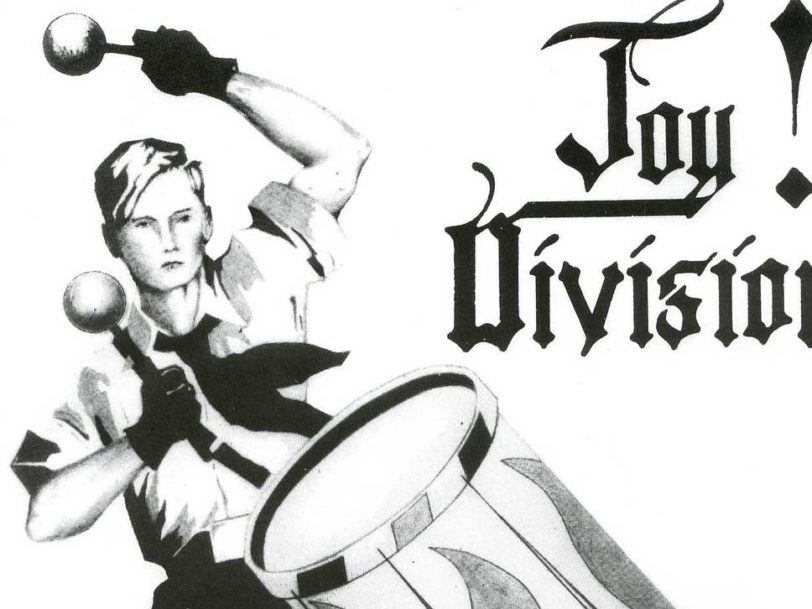Compared to their legend-enshrining albums, Unknown Pleasures and Closer, plus the deathless anthem Love Will Tear Us Apart , Joy Division’s debut release, the four-track An Ideal For Living EP, was raw and rudimentary. Yet it also showed real promise and served notice that its creators were already on the road to far greater things.
“The feel of jazz with the power of punk”
An Ideal For Living first saw official release on 3 June 1978, but by then it had a chequered history. In fact, its roots can be traced back another 12 months, to the summer of 1977, when Joy Division were still trading under their original name, Warsaw.
Galvanised by catching Sex Pistols’ legendary Manchester shows at both the Lesser Free Trade Hall and the Electric Circus, Warsaw made their live debut (also at the Electric Circus) supporting local punk luminaries Buzzcocks on 29 May 1977. From the beginning they featured vocalist Ian Curtis, guitarist Bernard Sumner and bassist Peter Hook, but hanging onto drummers initially proved problematic. The fledgling band only really took shape after Stephen Morris settled in behind the kit in the late summer of 1977.
Describing their first rehearsal together, at the Abraham Moss Centre in Manchester’s Cheetham Hill, in his book, Unknown Pleasures: Inside Joy Division, Hook recalled, “Steve was an absolute revelation. He had all that power that we were looking for but with a texture we hadn’t heard before. Most drummers just hammer it out, but Steve was playing the drums. You could tell he’d played with a jazz trio previously because he’d somehow combined the feel and intricacy of jazz with the power and energy of punk.”
“A cross between Bowie’s ‘Low’ and Iggy’s ‘The idiot’”
By the time Morris was recruited, Warsaw had made a sketchy first demo with a view to getting more gigs, but they knew they needed a more permanent document of their music. Spurred on by the success of Buzzcocks’ self-released Spiral Scratch EP (which eventually sold over 16,000 copies and landed the group a deal with United Artists), Warsaw, too, thought they could go the DIY route and release a record on their own label.
Financing the project required an element of subterfuge, as Ian Curtis raised the £600 needed to record the EP through a bank loan, saying that he and his wife, Deborah, wanted to use the cash for home improvements. In reality, the band used the money to pay for an all-in deal at Oldham’s Pennine Studios which included the services of the studio’s in-house engineer and the pressing of 1,000 singles with blank sleeves.
Early in October 1977, Warsaw headed to the studio. Manchester-based author Paul Morley (then a highly regarded NME writer) had expressed interest in producing, but he failed to show on the day, so the band produced the EP themselves. Though lacking in studio expertise, they knew they wanted An Ideal For Living to reach beyond the three-chord confines of punk.
“The session turned out so easy”
“We decided we wanted something a bit like a cross between [David] Bowie’s Low and Iggy Pop’s The Idiot,” Stephen Morris wrote in his memoir Record Play Pause. “We’d done some research and it seemed the Low drum sound [came about] through putting the snare through a harmoniser. Low’s producer Tony Visconti described the Eventide Harmoniser as a box that ‘fucks with the fabric of time’. Everyone home should have one – but when we asked the engineer, sadly Pennine Studios didn’t!”
Completed in just a matter of hours, An Ideal For Living sounds formative. Typical of a release dating from 1977, Warsaw (the song) and the frenetic Failures are fast punk workouts, whereas Leaders Of Men and the tense, intriguing No Love Lost offer more tangible clues as to where the band would soon be heading. The latter track – which also included a neat, guitar-panning effect – was the pick of the bunch and it was further accentuated by Curtis adding a spoken verse in which he read an extract from holocaust survivor Yehiel De-Nur’s novel, House Of Dolls.




